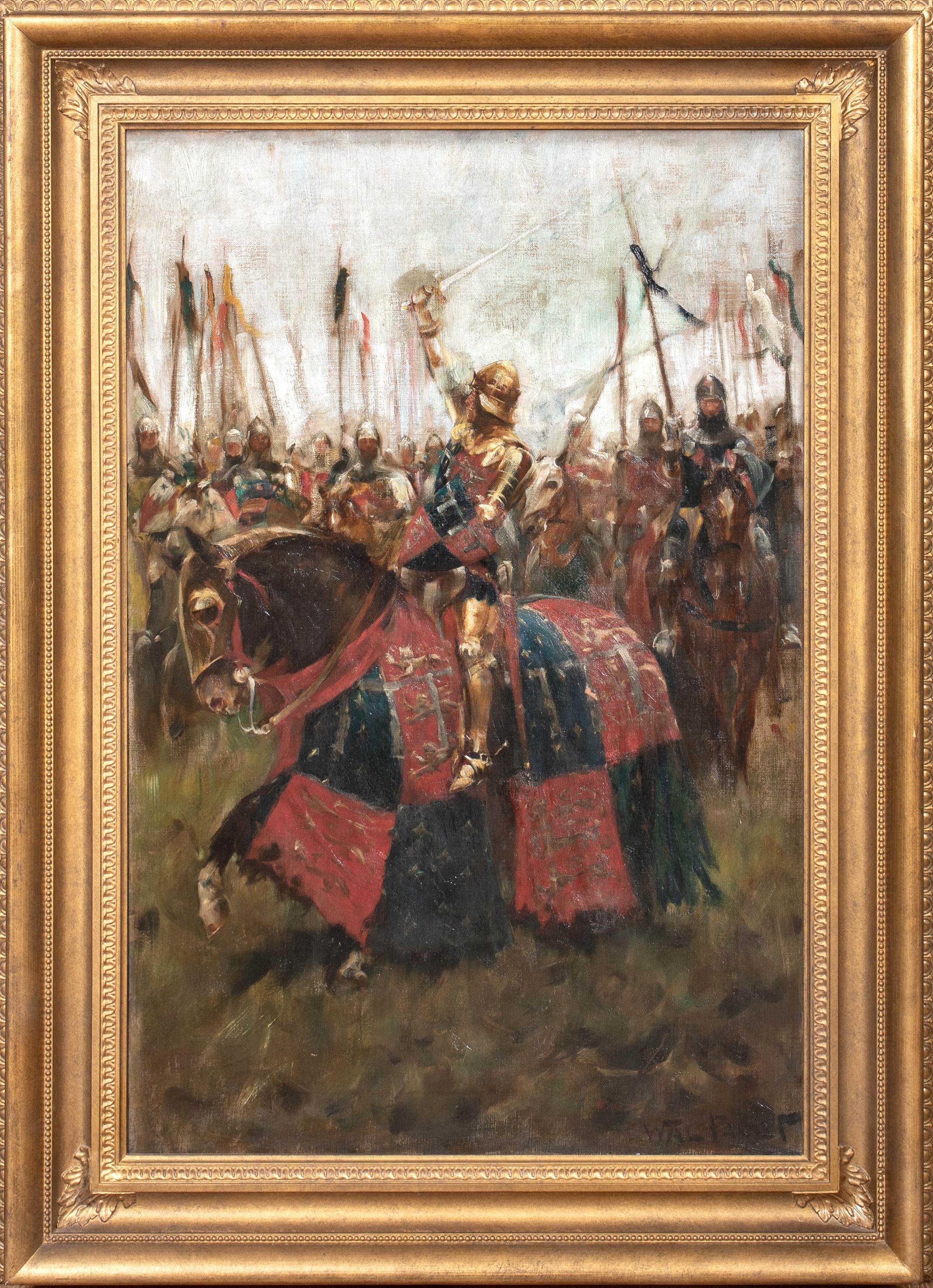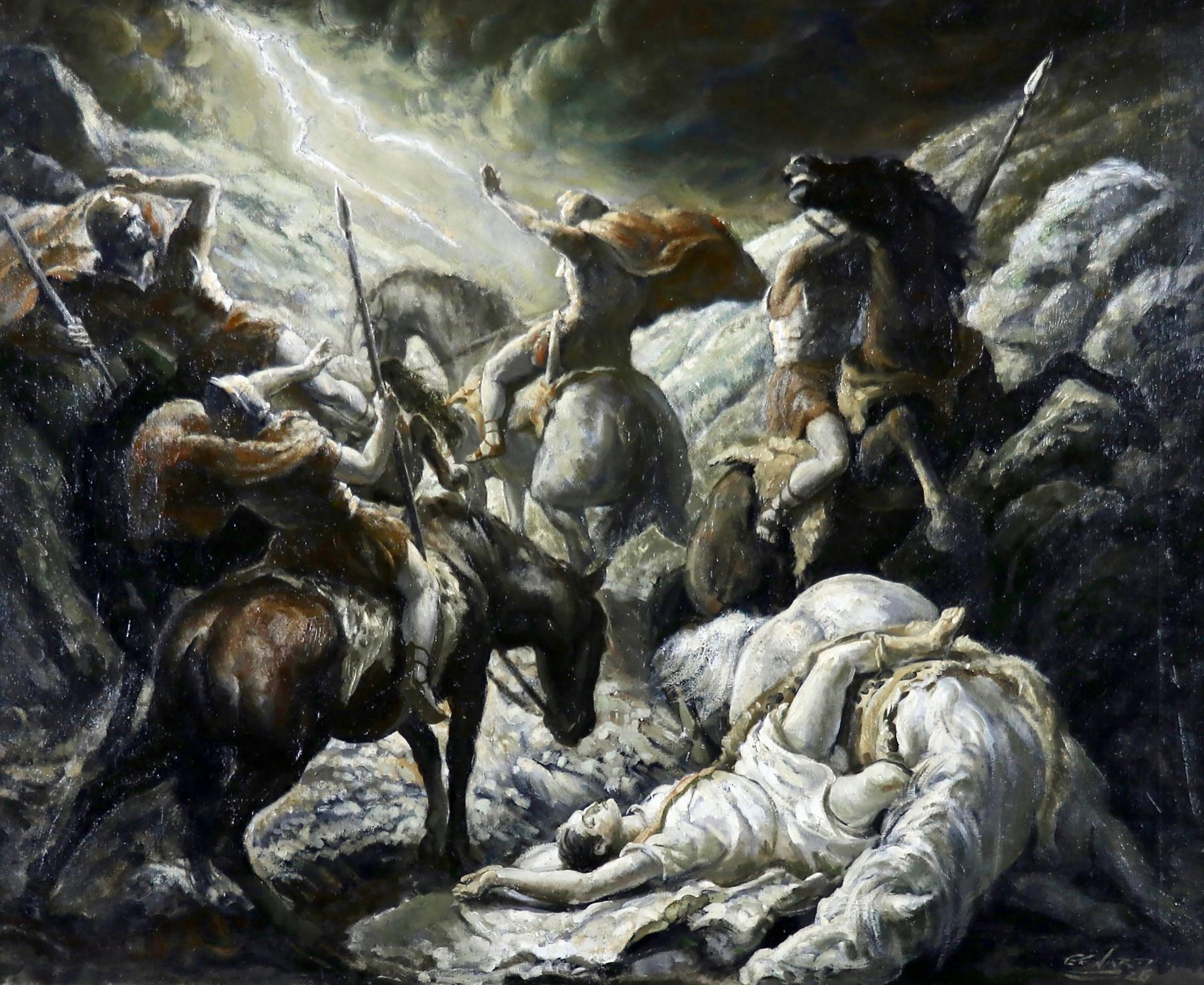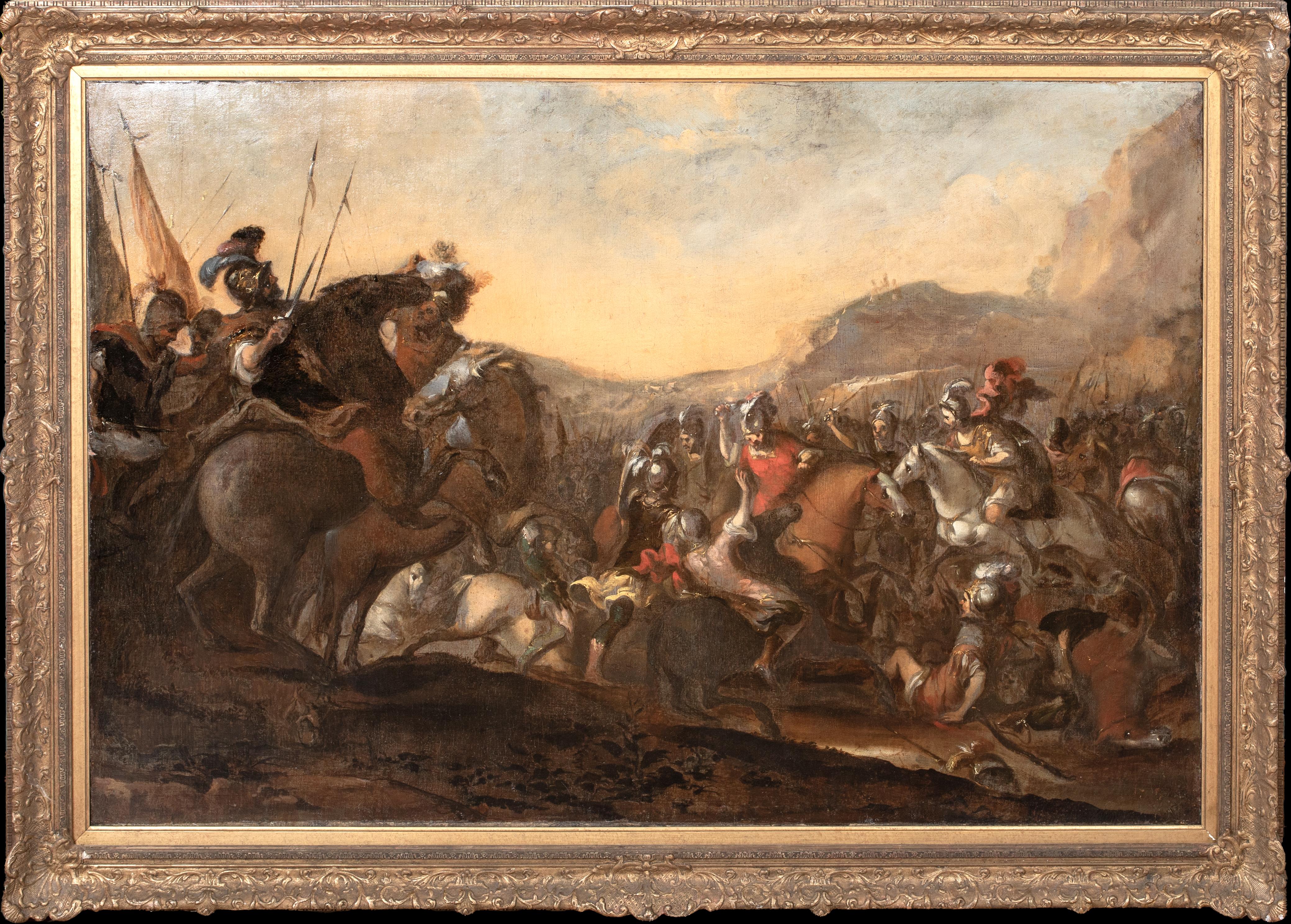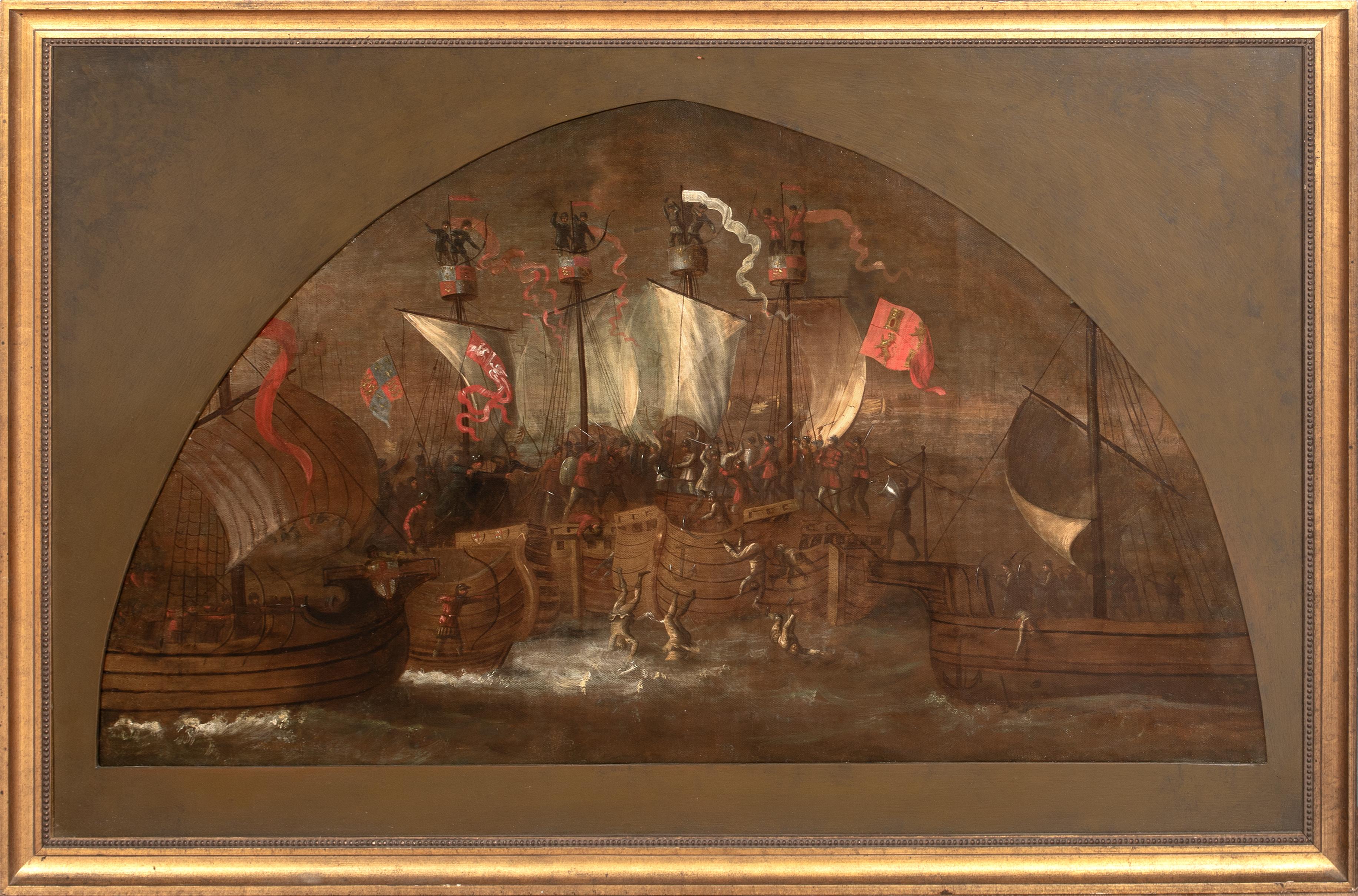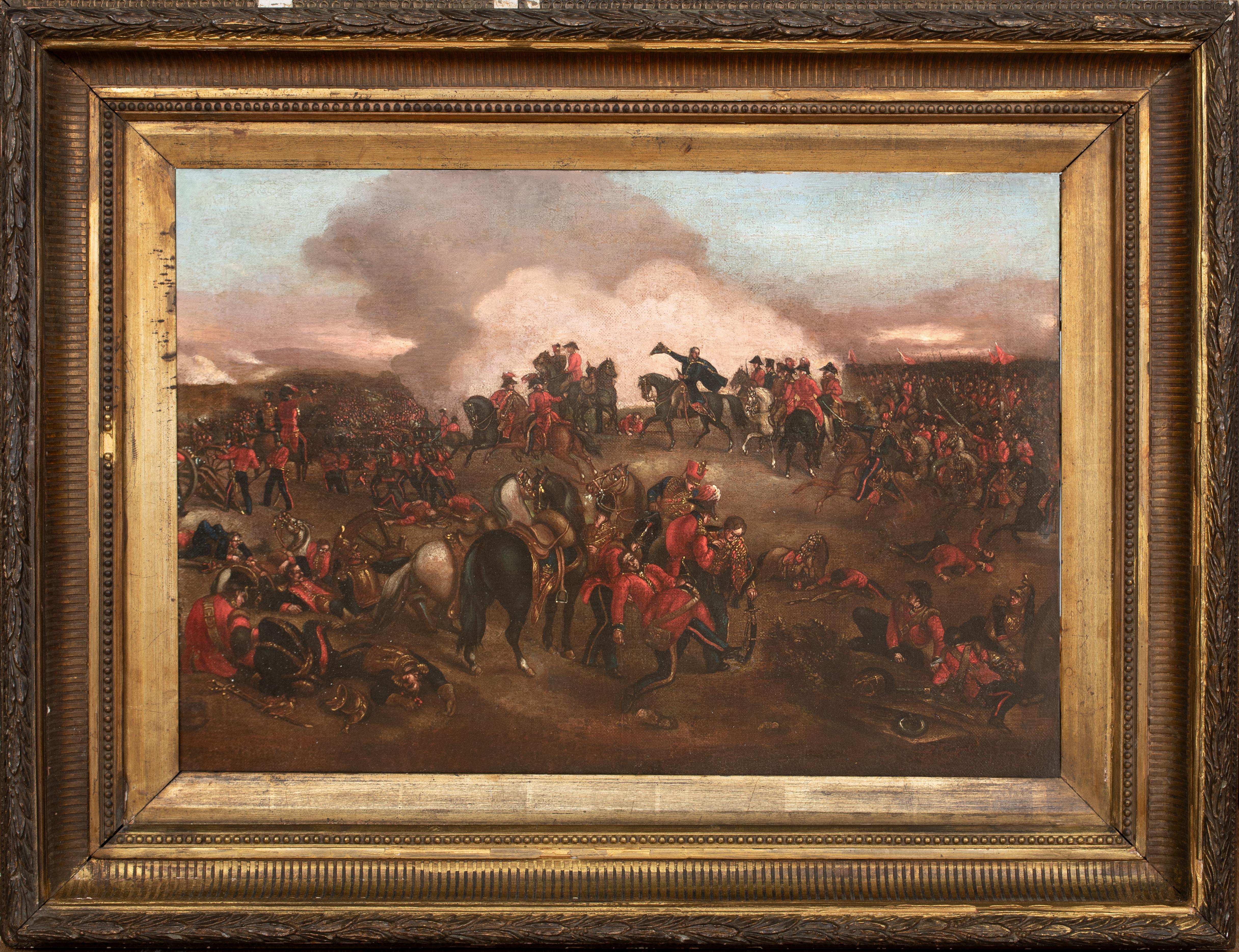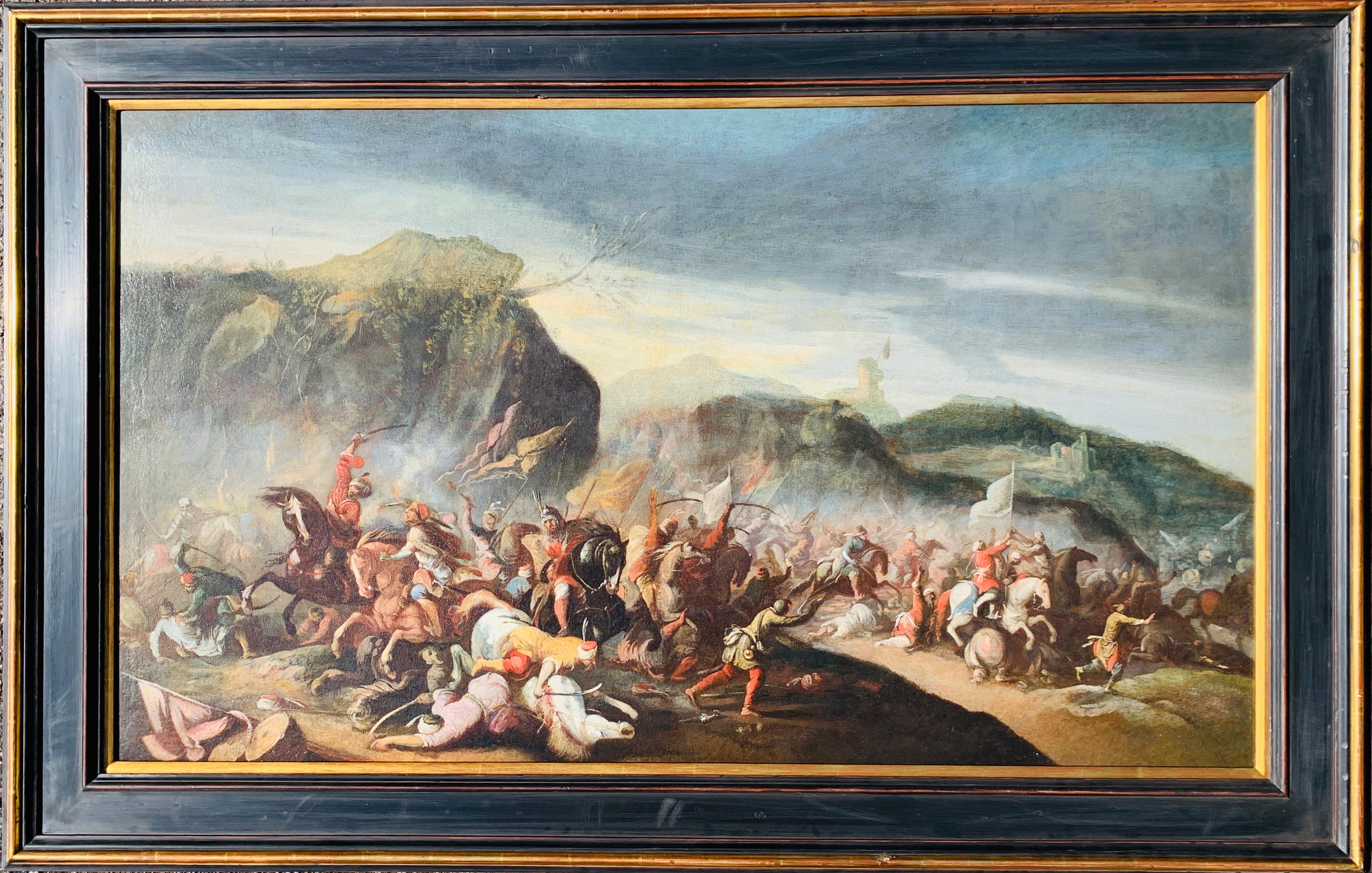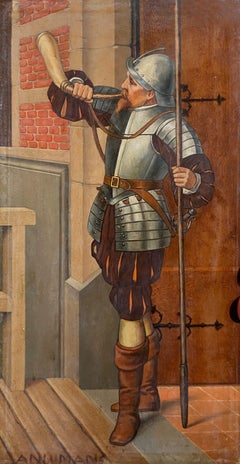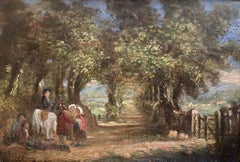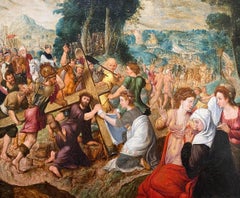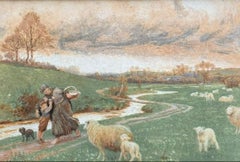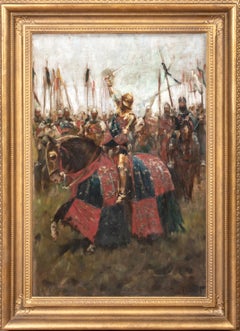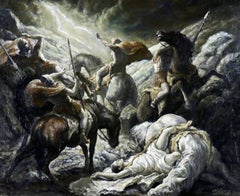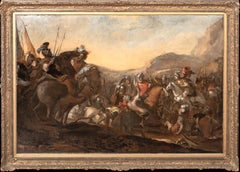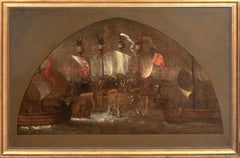Items Similar to The Battle of Flodden, English School Early 20th Century Oil, Knights
Want more images or videos?
Request additional images or videos from the seller
1 of 5
UnknownThe Battle of Flodden, English School Early 20th Century Oil, Knights1910
1910
$13,241.72
£9,600
€11,294.06
CA$18,324.55
A$20,393.73
CHF 10,617.46
MX$246,276.12
NOK 133,152.77
SEK 125,771.18
DKK 84,336.51
About the Item
English School
1910
The Battle of Flodden
Oil on canvas, monogrammed and dated 1910 lower right
Image size: 25 x 50 inches (63.5 x 127 cm)
Original frame
Provenance
Dacre Castle
The Battle of Flodden or Flodden Field, sometimes called the Battle of Branxton was part of a conflict between England and Scotland. The Scots were allied with France and at the time of the battle Henry VIII was in France fighting there and had left his kingdom under the regency of his queen Catherine of Aragon.
The battle was fought in Branxton in Northumberland on 9 September 1513, between an invading Scots army under King James IV and an English army commanded by the seasoned warrior Thomas Howard, Earl of Surrey.
Invoking the Auld Alliance with France, James IV of Scotland crossed the Tweed with a large well-equipped army. He took Norham, Etal and Ford Castles and established a stronghold a mile to the south of here, on Flodden Hill.
Surrey marched his forces north but avoided the Scottish position with a wide flanking move to the east, making his approach to the Battle from the north, via Twizel Bridge.
James was forced to relinquish his fortifications and move his troops and heavy cannon to the ridge of Branxton Hill. The English lines spread out west to east along the ridge on which Branxton stands.
Battle commenced in the late afternoon of 9th September 1513, when the Scots' guns opened fire. It was dull, damp and muddy, having rained for most of the day.
In the following hours, these fields became the scene of bloody carnage in which an estimated 4,000 Englishmen and 10,000 Scottish lost their lives.
The English won a resounding victory, King James IV was killed in the battle and body is reputed to have been sent in a coffin to Catherine who in turn sent the Scottish king’s coat to Henry VIII in France to use as a banner in the war there.
In the painting we can see various heraldic banners, such as the ones listed below.
The banner showing a red field with the white lion marked with a blue crescent represents Thomas Howard, 2nd Duke of Norfolk (or possibly Edmund Howard, future 3rd Duke of Norfolk)
The gold and green field, with the gold falcon eating a baby represents Edward Stanley, 1st Baron Monteagle KG
The gold and blue field, with a red bull represents Thomas Dacre, 2nd Baron Dacre of Gilsland, KG.
- Creation Year:1910
- Dimensions:Height: 25 in (63.5 cm)Width: 50 in (127 cm)Depth: 5 in (12.7 cm)
- More Editions & Sizes:1 of 1Price: $13,242
- Medium:
- Period:
- Condition:
- Gallery Location:London, GB
- Reference Number:1stDibs: LU5248234562
About the Seller
5.0
Vetted Professional Seller
Every seller passes strict standards for authenticity and reliability
Established in 2007
1stDibs seller since 2014
82 sales on 1stDibs
Typical response time: 4 hours
- ShippingRetrieving quote...Shipping from: London, United Kingdom
- Return Policy
Authenticity Guarantee
In the unlikely event there’s an issue with an item’s authenticity, contact us within 1 year for a full refund. DetailsMoney-Back Guarantee
If your item is not as described, is damaged in transit, or does not arrive, contact us within 7 days for a full refund. Details24-Hour Cancellation
You have a 24-hour grace period in which to reconsider your purchase, with no questions asked.Vetted Professional Sellers
Our world-class sellers must adhere to strict standards for service and quality, maintaining the integrity of our listings.Price-Match Guarantee
If you find that a seller listed the same item for a lower price elsewhere, we’ll match it.Trusted Global Delivery
Our best-in-class carrier network provides specialized shipping options worldwide, including custom delivery.More From This Seller
View AllThe Palace Guard, Oil on Panel Signed Painting
Located in London, GB
Oil on panel, signed bottom left
Image size: 6 x 11 inches (15.25 x 28 cm)
This painting depicts a 16th century palace guard standing outside of an open door, wearing a set of armou...
Category
19th Century Figurative Paintings
Materials
Oil, Panel
The Journey, Late 18th English Oil Landscape
Located in London, GB
Oil on panel
Image size: 5 1/2 x 8 inches (14 x 2o cm)
Contemporary hand made frame
A charming scene of an English country lane, featuring a group of travellers resting on their journey. Two maids seem deep in discussion while they wait with a gentleman wearing a tricorn hat and fashionable maroon...
Category
Late 18th Century English School Landscape Paintings
Materials
Oil, Panel
The Road to Calvary, Oil on Oak Panel, 16th Century Painting
Located in London, GB
Oil on oak panel
Image size: 20 1/2 x 23 1/2 inches (52 x 60 cm)
Hand made frame
Herri Met de Bles, also known as Henri Blès, Herri de Dinant and Herry de ...
Category
16th Century Figurative Paintings
Materials
Oak, Oil
The Right of Way
By Frederick Walker
Located in London, GB
Frederick Walker
The Right of Way
1840-1875
Watercolour and bodycolour on paper
Image size: 12 x 8 inches (30.5 x 20.25 cm)
Handmade Pre-Raphaelite style frame
In this pastoral scen...
Category
19th Century Landscape Paintings
Materials
Paper, Watercolor
Touchstone and Corin, British Pre-Raphaelite 19th Century Oil on Canvas
Located in London, GB
Adolphus M. Madot
Circa 1833 - 1861
Oil on canvas
Image size: 36 x 24 inches (91.4 x 61 cm)
Arched Pre-Raphaelite style frame
The subject of the present picture is the dialogue between the court jester Touchstone and the shepherd Corin in the Forest of Arden ( As You Like It, Act III, scene 2). The work of William Shakespeare 'As You Like It' was a popular literary source in Pre-Raphaelite circles, inspiring such artists as John Everett Millais, Walter Howell Deverell and Arthur Hughes. The present picture is comparable in style to the work of Edward W. Rainford and Henry Stacy Marks...
Category
1850s Pre-Raphaelite Figurative Paintings
Materials
Oil
Landscape, Oil on Oak Panel, 17th Century
Located in London, GB
Oil on oak panel
Image size: 24 1/2 x 41 1/4 inches (62.25 x 104.75 cm)
19th Century Handmade frame
POA
Jan Brueghel the Younger
Jan Brueg...
Category
Mid-17th Century Landscape Paintings
Materials
Oak, Oil
You May Also Like
King Henry V Of England, The Battle Of Agincourt 1415, 19th Century
Located in Blackwater, GB
King Henry V Of England, The Battle Of Agincourt 1415, 19th Century
by WALTER STANLEY PAGET (1861-1908)
Large 19th Century scene of King Henry V at the Battle Of Agincourt 1415, oi...
Category
19th Century Portrait Paintings
Materials
Canvas, Oil
Medieval Fight Scene, 1926
By Edmund Ward
Located in Fort Washington, PA
Medium: Oil on Canvas
Signature: Signed Lower Right
Medieval Fight Scene by Edmund Franklin Ward, from 1926.
Category
1920s Figurative Paintings
Materials
Canvas, Oil
Battle of Marignano, 17th Century - Medieval Italian Wars - King Francis I
By Jacques Courtois
Located in Blackwater, GB
Battle of Marignano, 17th Century
attributed to Il Borgognone (1628-1679)
Large 17th Century Italian Wars battle scene identified as the Battle Of Marignano, oil on canvas. Excell...
Category
17th Century Portrait Paintings
Materials
Canvas, Oil
The Battle Of Sluys (1340), oil on canvas, 100 Hundred Years War Naval Scene
Located in Blackwater, GB
The Battle Of Sluys (1340), oil on canvas, 16th/17th Century
Rare account of the opening engagement of The Hundred Years War (1337-1453)
Fine huge antique history painting depictin...
Category
18th Century Landscape Paintings
Materials
Canvas, Oil
The Duke of Wellington At The Battle Of Waterloo, 19th Century English School
Located in Blackwater, GB
The Duke of Wellington At The Battle Of Waterloo, 19th Century
English School
Large 19th Century English School scene of The Duke of Wellington at The Battle Of Waterloo, oil on ca...
Category
19th Century Landscape Paintings
Materials
Canvas, Oil
17th century Italian Horse Battle scene between Crusaders and their enemy
By Jacques Courtois
Located in Woodbury, CT
Fine huge 17th Century Italian/French Old Master Battle Scene of the Crusades, oil on canvas. Grand scale extensive landscape view of a battle from the 1670-80 period, with cavalry f...
Category
Late 17th Century Old Masters Figurative Paintings
Materials
Oil
$15,600 Sale Price
20% Off
Free Shipping
More Ways To Browse
Antique Battle Painting
Henry Viii
Painting Oil Earl
Lion Art By England
Regency Oil Painting
Paintings Of Scottish Castles
Scottish Castle Painting
French Cannon
Bull Paintings Antique
Paintings By Thomas King Original
Catherine Hills
Thomas Knight
Red Baron
Antique Coffin
Antique Gun Oiler
King Edward Viii
Field Cannon
Aragon Castle
